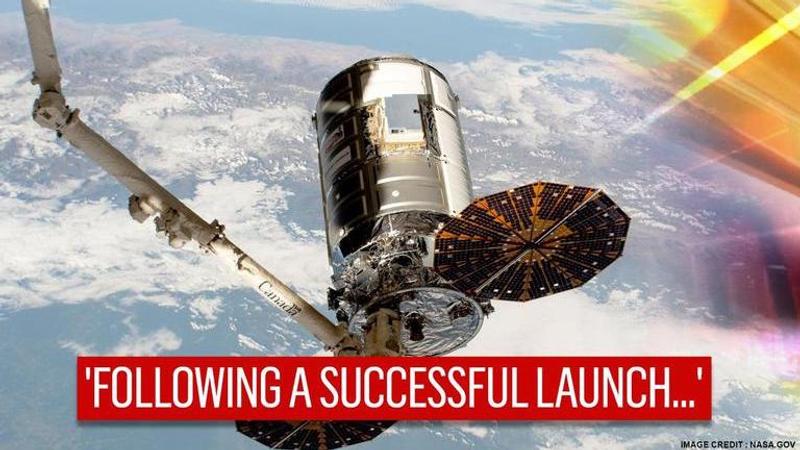Published 16:45 IST, October 5th 2020
NASA’s SS Kalpana Chawla Cygnus arrives at ISS for ‘rendezvous and capture’
Following a successful launch of Northrop Grumman Cygnus spacecraft, NASA in a recent update informed that the cargo ship arrived at the ISS on October 5.

Following a successful launch of Northrop Grumman Cygnus spacecraft, dubbed as the S.S. Kalpana Chawla, NASA in a recent update informed that the cargo ship arrived at the International Space Station for ‘rendezvous and capture’ on October 5. The uncrewed Cygnus spacecraft launched on Friday, October 2 at 21:16 EDT (Saturday, 3 October at 01:16 UTC) from Pad 0A at the Mid-Atlantic Regional Spaceport in Virginia. It is carrying nearly 8,000 pounds of scientific investigations, technology demonstrations and commercial products.
Aboard the ISS, Expedition 63 Commander Chris Cassidy of NASA will capture the spacecraft assisted by Ivan Vagner of Roscosmos, who will monitor Cygnus systems during its approach for capture. The two astronauts will use the space station’s robotic arm named 'Canadarm2', to reach out to the spacecraft and then physically berth it to a port on the Unity (Node-1) module.
After the spacecraft SS Kalpana Chawla will be secured, the crew members will click pictures of the vehicle to document its arrival condition before they removing the newly delivered Cargo, said NASA. Once the cargo is removed, Cygnus will serve as an extended lab to the International Space Station. Some of the experiments will be performed in the new extended laboratory.
SS Kalpana Chawla Cygnus
SS Kalpana Chawla Cygnus which has been launched in the space by Northrop Grumman is made up of a Pressurised Cargo Module. Both the sections of this spacecraft had arrived separately in August. Once it was integrated together, Cygnus was shifted to Horizontal Integration Facility where the rest of the Antares rocket will be attached to it. In order to keep up with the tradition of naming every Cygnus vehicle after someone who has contributed in the field of space exploration, Northrop Grumman decided to honour Dr Kalpana Chawla.
Kalpana Chawla was the first Indian-born woman to travel to space. She was born on March 17, 1962, and completed her Bachelor of Engineering in Aeronautical engineering from Punjab Engineering College in India and later moved to the United States in 1982. Chawla died on February 1, 2003, in the Space Shuttle Columbia disaster along with her other crew members. Columbia disintegrated over Texas while it was re-entering into the Earth's atmosphere.
Updated 16:44 IST, October 5th 2020



